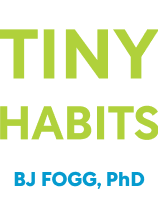

This article is an excerpt from the Shortform book guide to "Tiny Habits" by BJ Fogg. Shortform has the world's best summaries and analyses of books you should be reading.
Like this article? Sign up for a free trial here .
What is Focus Mapping? How can Focus Mapping help you decide which behaviors you should target to change?
Focus Mapping is BJ Fogg’s method of choosing which habits you can feasibly develop. Here is an activity you can do at home to start achieving your goals.
Continue below for the more information on Focus Mapping.
Focus Mapping
Focus Mapping is a way to choose to develop habits that you’re already motivated to do. This method from Tiny Habits focuses on “I want to” rather than “I should.”
Here’s how to do Focus Mapping:
1. Write all of your brainstormed behaviors on index cards.
2. On a large flat surface, set up an axis as follows:
3. Arrange cards. Stage 1: Impact. For now, only consider the vertical axis. Take each card individually and ask yourself: Will this be an efficient way to achieve my aspiration?
- If you think it will, put it toward the top of the Impact axis.
- If you don’t think it will, put it toward the bottom.
At the end of Stage 1, all of your index cards should be lined up along the vertical axis, with the most effective at the top and the least effective at the bottom.
4. Arrange cards. Stage 2: Feasibility. Now only consider the horizontal axis. For each card, ask yourself: Is this realistic? Because Tiny Habits is about feeling good and minimizing motivation struggles, a good substitute question is: Do I really want to do this?
Imagine yourself doing the behavior. Does it feel good? Do you feel any resistance? It’s important to listen to even slight feelings of resistance.
5. Look at the top right-hand quadrant of the Focus Map. There should be at least two to three behaviors there that feel familiar, easy, and “right.” These are your Golden Behaviors.
If there are no behaviors in the top right-hand corner, go back and generate another Swarm of Bs (swarm of behaviors). If there are any one-off behaviors on the list, prioritize these. They often solve the problem faster.
How Not to Choose Target Behaviors
Here are some common behavior matching methods that don’t work:
- Random guessing. Don’t look out the window at a random cyclist, buy all the gear, slog through one commute to work, and realize it’s not for you. Be as methodical as you can in this process. Set yourself up for success through design—don’t depend on luck.
- Inspiration from the internet. The internet is a context-free minefield of unrealistic inspiration. Steer clear unless a behavior you see really seems to suit you and fit into your life.
- What worked for someone else. If your mother tells you she’s gone cold turkey on coffee by substituting herbal tea, this doesn’t necessarily mean the same approach will work for you.
Tiny Behaviors are tailored. Yours should feel like they’re made just for you.

———End of Preview———
Like what you just read? Read the rest of the world's best book summary and analysis of BJ Fogg's "Tiny Habits" at Shortform .
Here's what you'll find in our full Tiny Habits summary :
- How you can successfully create new habits that stick
- Why you don't need motivation, just science
- Why even flossing one tooth should be considered a victory






